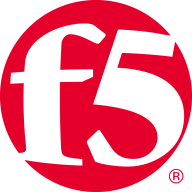

Find out what your peers are saying about IBM, Salesforce, Oracle and others in Enterprise Service Bus (ESB).
We have a good relationship with our vendor, and they are ready to help us with any technical issues.
The technical support of Mule ESB can be rated from nine to ten.
The technical support from Salesforce is moderate.
Response time is good because they have assigned and dedicated support engineers to us, and we have weekly cadence calls.
Mule ESB is a scalable solution.
When it comes to scalability and the ability to expand, I would rate Mule ESB as an eight or nine.
The adaptability of Mule ESB in supporting multiple messaging patterns is pretty decent and pretty good.
While some people use NGINX for web servers, my current use case focuses on networking and tunneling, which does not necessitate much scaling.
Mule ESB is a stable product, and I have no doubts about its reliability.
I require ninety-nine point nine percent uptime, and NGINX has been pivotal in helping me achieve this along with our other DNS services.
Points for improvement in Mule ESB definitely include enhancing the analytics capabilities because currently, they rely on external logging tools such as Splunk or ELK, which is lagging behind compared to other tools such as Workato that offer more analytical features.
More information is needed from MuleSoft.
Pricing is one factor that could be improved about Mule ESB; other than that, I'm pretty fine with it.
NGINX could provide a means to generate self-signed SSL certificates.
As with any application, there were initial issues, however, after receiving support, everything was rectified.
There were some vulnerabilities in F5.
My use case involves using the free and open-source version of NGINX, making it cost-effective as I haven't incurred any costs.
The solution offers a cost advantage.
They have their own language called DataWeave, which helps transform data and is efficient enough to handle any kind of transformation.
It is also reusable, meaning the same service can be used in multiple places simply by adding it, and this comes with the API-led architecture that makes integrations more secure and reliable.
The best features of Mule ESB are that it's very robust and solid; I find that even our legacy systems go well with ESB.
For API management, the WebSocket, and the WebServer, NGINX provides a cost advantage, value addition, and effective support.
The web application firewall feature has helped enhance security for our applications because most of the attacks which are performed on our website are being blocked by it.
| Product | Market Share (%) |
|---|---|
| Mule ESB | 15.0% |
| IBM Integration Bus | 16.6% |
| webMethods.io | 9.7% |
| Other | 58.7% |
| Product | Market Share (%) |
|---|---|
| NGINX Plus | 6.4% |
| F5 BIG-IP Local Traffic Manager (LTM) | 15.3% |
| NetScaler | 13.2% |
| Other | 65.1% |


| Company Size | Count |
|---|---|
| Small Business | 23 |
| Midsize Enterprise | 6 |
| Large Enterprise | 38 |
| Company Size | Count |
|---|---|
| Small Business | 15 |
| Midsize Enterprise | 2 |
| Large Enterprise | 11 |
NGINX Plus is a versatile solution that offers load balancing, caching, proxying, and API deployment capabilities. It can be deployed on private or public clouds and is ideal for building CDN solutions. The solution can also be used to secure web applications and replace web services like Apache.
NGINX has helped organizations improve functioning, reduce downtimes, and offer a DevOps-friendly solution. Its community support and documentation are highly regarded, and its configuration is more straightforward, making it a recommended choice over HAProxy.
We monitor all Enterprise Service Bus (ESB) reviews to prevent fraudulent reviews and keep review quality high. We do not post reviews by company employees or direct competitors. We validate each review for authenticity via cross-reference with LinkedIn, and personal follow-up with the reviewer when necessary.